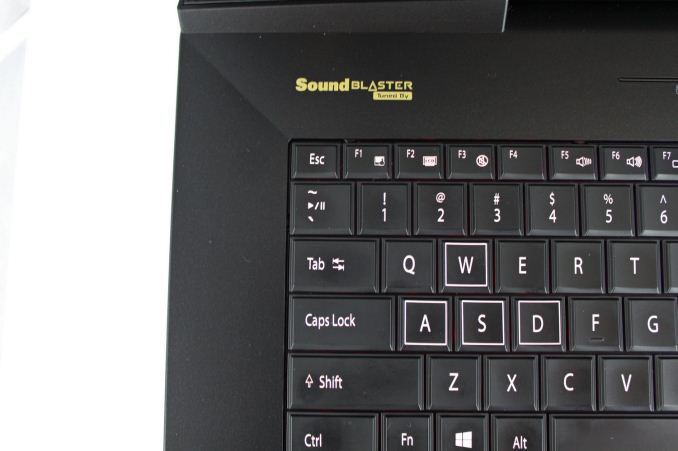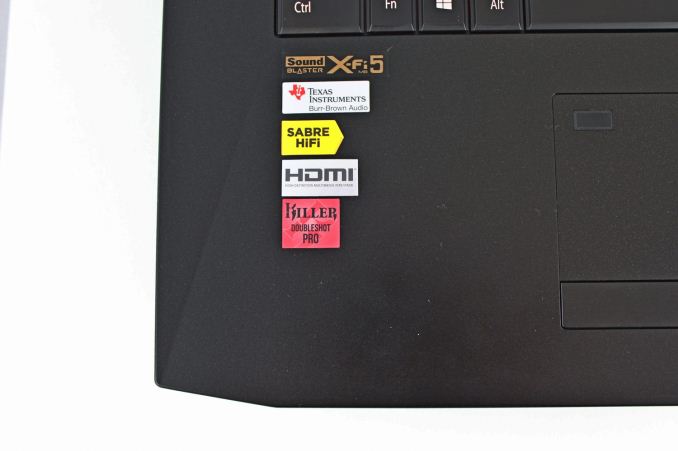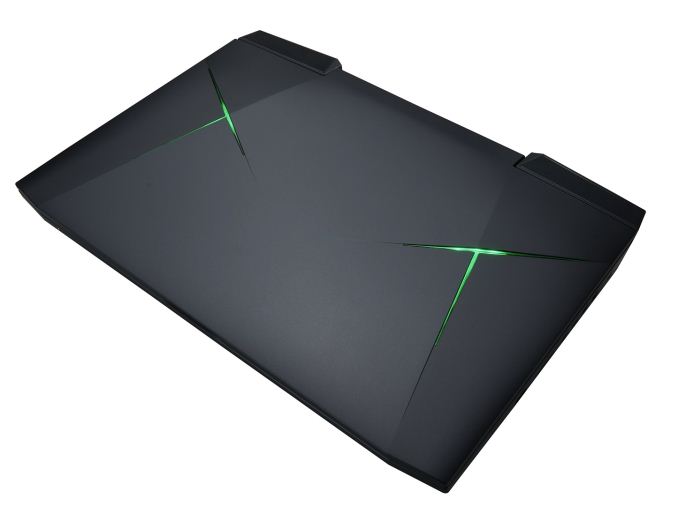The Clevo P870DM2 / Mythlogic Phobos 8716 Laptop Review: DTR With GTX 1080
by Brett Howse on October 27, 2016 2:00 PM ESTFinal Words
What else is there to say about this notebook? If you are after a desktop replacement, the market shrinks considerably, and very few companies offer desktop class processors in notebooks these days. Clevo is one of them, and they have shoehorned a full 91-Watt overclockable processor into this notebook. On CPU bound tasks, it is very likely that there is no other high volume notebook that is faster than this one. The performance is very impressive.
On the GPU side, there are plenty of options here too, but all of them based on the new Pascal architecture from NVIDIA. With just a 1920x1080 panel to push, even the GTX 1070 is going to have very good performance, but the GTX 1080 is such a big step up in the notebook market that it’s almost difficult to believe. It is basically twice as fast as the outgoing GTX 980M in real-world gaming tests. The GTX 980M was no slouch, but with NVIDIA moving to the full desktop class GPUs in notebooks this year, the jump in performance is as big as any seen in recent years. For those that really want the best of the best, Mythlogic offers this laptop with SLI GTX 1080 (or 1070), and choices of a 1920x1080 IPS 120 Hz display, 2560x1440 120 Hz G-Sync display, and 3840x2160 60 Hz G-Sync as well. The lower resolution display does have the advantage of being a 120 Hz display though, and the GTX 1080 can pretty easily drive most games at or above that refresh rate. The 2560x1440 seems like a great sweet spot for the non SLI models though, especially with G-Sync.
There are a lot of configurations available, which is typical of these types of systems, and it’s nice to be able to pick and choose your components a bit more than the larger OEMs allow. There is room for multiple M.2 SSDs, multiple 2.5-inch SSDs, and four SO-DIMM slots for memory. All of the components can be accessed through the bottom, or by removing the keyboard.
The chassis is far from the best around, with it being a large, thick, machine, made entirely of black plastic. The styling is ok though, with no crazy artwork or anything, and honestly for a notebook that is going to live its life on a desk, it is going to be absolutely fine.
What isn’t as fine is the keyboard. MSI has a fully mechanical keyboard in the GT83VR Titan, Razer has low profile mechanical switches in the new Razer Blade Pro, and Alienware has really worked hard at improving their keyboard as well with this generation. The Clevo keyboard feels like it is from about a decade ago, with very little travel despite the notebook being almost two inches thick. The keys themselves have very little bevel to them, and all of the keys are packed in so tight that it is very easy to lose where you are and hit the wrong key by mistake. If you are going to use this as a true desktop replacement, I suppose an external keyboard is an option, but it really shouldn’t need to be this way. The trackpad is just average, but here it’s difficult to be too critical since almost everyone that purchases a laptop like this is going to use it with a mouse.
At the end of the day, I am not the target market for this device. I have a desktop, and I haven’t moved houses in over a decade, but you can certainly see the appeal of having all the performance of a desktop in something you can move around a lot easier. Maybe you travel for work, or maybe you go to school, but being able to pick up a full desktop with the display attached and put it in a big is going to be a nice perk. And, even with all of these powerful components inside, the pricing is very reasonable. It’s hard to say something that starts at $2250 is inexpensive, but for what you get it is not. The base model still has a GTX 1070 and a desktop class 65-Watt CPU, and a 120 Hz display. You can tack on a lot of options to really drive up the price, but even this review unit with a GTX 1080, 32 GB of memory, and a Core i7-6700K still comes in under $3000. For that money, you won’t be able to find another laptop with this much performance available.













61 Comments
View All Comments
Morawka - Thursday, October 27, 2016 - link
i dont think nvidia is done with pascal mobile parts. I'm sure they will release some midrange stuff here soon.Meaker10 - Friday, October 28, 2016 - link
The vapor chamber cooler on the SLI 1080 config can keep both cards at 1910mhz core clocks during gaming with both cards loaded with the right mounting :)The_Assimilator - Friday, October 28, 2016 - link
Given that Pascal is probably the last gasp of the Maxwell architecture, I think it was a simple matter of nVIDIA wanting to push it as far as it could go. (That, and wanting to crush AMD Polaris.) So slightly higher TDP was probably not a concern of theirs, especially given how much more performance you're getting for that power.As for your desire for potentially slower cards that draw even less power, I'm actually with you on that one. I'm tired of seeing "low-end" cards that require dual-slot cooling and additional power connectors. Bloody hell, back in the day, the 8800 GT was near the top of the hill in terms of performance and it was a single-slotter with 1 PCIe power connector.
BillyONeal - Thursday, October 27, 2016 - link
I'm happy they stopped with the mobile GPU mess. I was sick of looking at laptops and having no idea how they'd perform because the nomenclature of the desktop and mobile parts were different, and nobody did reviews or had good benchmarks of the mobile parts.Sure, due to thermal constraints the mobile implementations are going to perform a little bit worse than desktop equivalents in some circumstances, but not ~50% worse as was common just a few years ago.
Spunjji - Friday, October 28, 2016 - link
We have a new problem, though - actual performance is extremely dependent on cooling implementation due to the huge delta in boost clocks these things can produce.It's great from the perspective of getting the most possible out of your own device, but from a view of trying to buy a notebook it's a bit nightmarish.
BillyONeal - Friday, October 28, 2016 - link
Sure, but that was also true with "m" branded GPUs. Crappy cooling will still tank perf.versesuvius - Thursday, October 27, 2016 - link
DTR or overspeced (overspect ?) AIO?Michael Bay - Thursday, October 27, 2016 - link
Top cover. Just why.anactoraaron - Thursday, October 27, 2016 - link
"But Mythlogic also adds their own tools to do a couple of things. Mythlogic has a control center..."Correct me if I'm wrong but that looks like the standard Clevo control center. I have that on my 2 year old Clevo W370ss. I don't have the other software, but from the ui design I would assume that it is Clevo software also. Nothing looks to be exclusive to Mythlogic to me.
anactoraaron - Thursday, October 27, 2016 - link
Also after seeing the performance relative to the 980M, that new surface aio looks even less worth the money. MS didn't need to go full 1080, but a 1070 or even a 1060 would have been a better choice. Don't get me wrong, but with the surface devices it seems to me like they keep missing the mark, and I keep telling myself 'maybe they'll get the next one right and I'll pick one up.' Only to get let down every year.